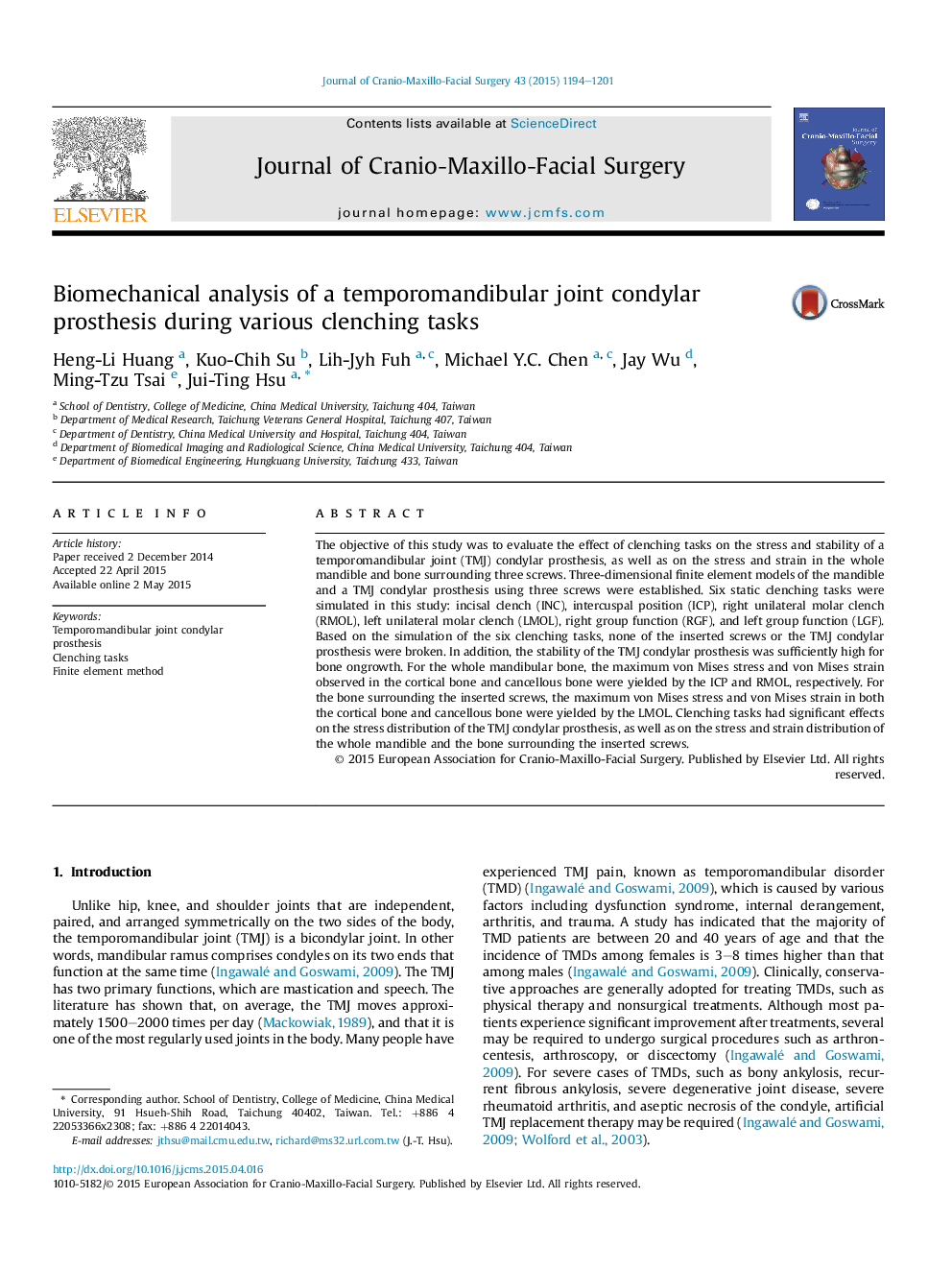| Article ID | Journal | Published Year | Pages | File Type |
|---|---|---|---|---|
| 3142362 | Journal of Cranio-Maxillofacial Surgery | 2015 | 8 Pages |
The objective of this study was to evaluate the effect of clenching tasks on the stress and stability of a temporomandibular joint (TMJ) condylar prosthesis, as well as on the stress and strain in the whole mandible and bone surrounding three screws. Three-dimensional finite element models of the mandible and a TMJ condylar prosthesis using three screws were established. Six static clenching tasks were simulated in this study: incisal clench (INC), intercuspal position (ICP), right unilateral molar clench (RMOL), left unilateral molar clench (LMOL), right group function (RGF), and left group function (LGF). Based on the simulation of the six clenching tasks, none of the inserted screws or the TMJ condylar prosthesis were broken. In addition, the stability of the TMJ condylar prosthesis was sufficiently high for bone ongrowth. For the whole mandibular bone, the maximum von Mises stress and von Mises strain observed in the cortical bone and cancellous bone were yielded by the ICP and RMOL, respectively. For the bone surrounding the inserted screws, the maximum von Mises stress and von Mises strain in both the cortical bone and cancellous bone were yielded by the LMOL. Clenching tasks had significant effects on the stress distribution of the TMJ condylar prosthesis, as well as on the stress and strain distribution of the whole mandible and the bone surrounding the inserted screws.
